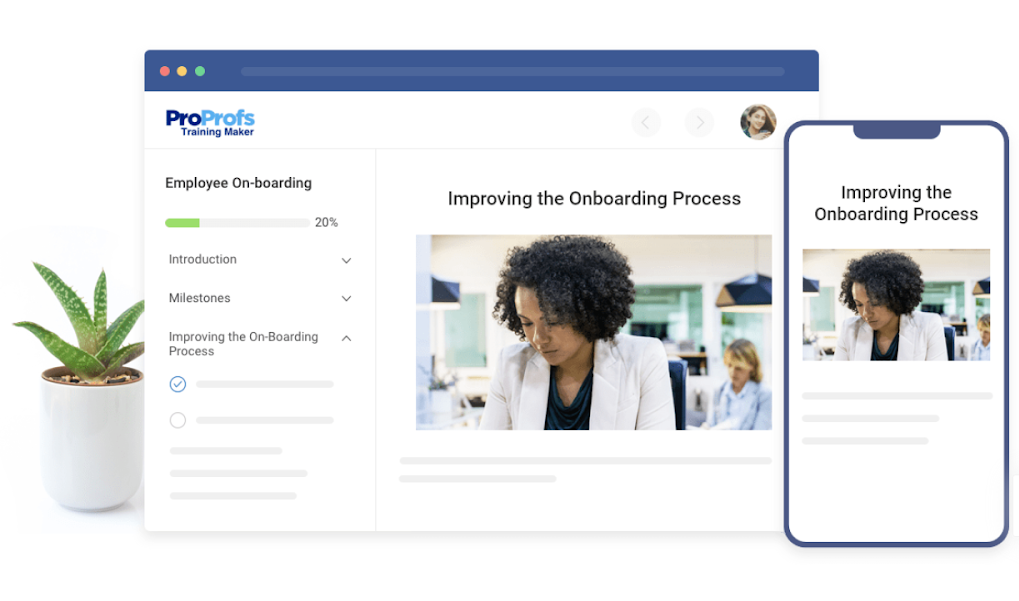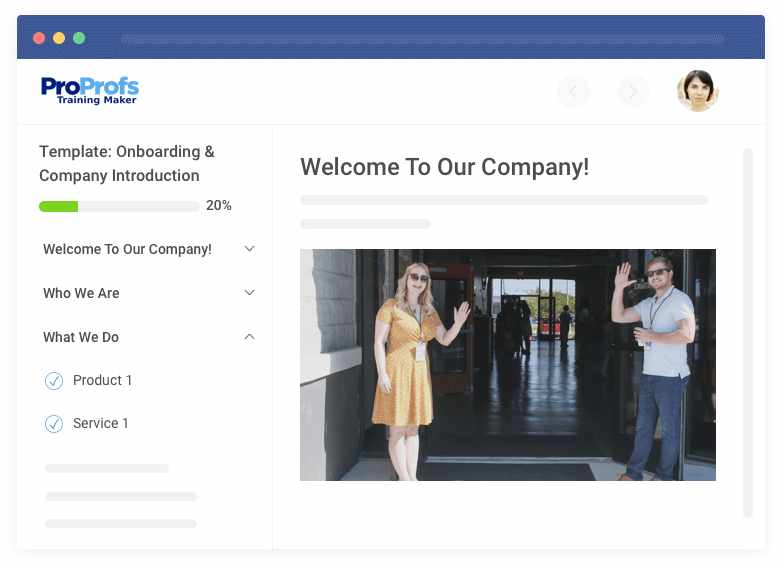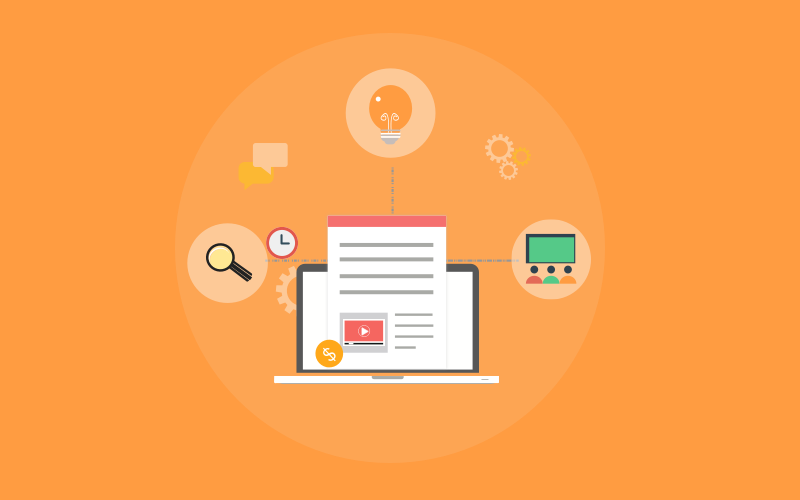Do you ever wonder what this whole orientation vs onboarding talk is all about? Aren’t they the same thing?
Well, many people still use the two terms interchangeably and loosely refer to them as the same. But technically, there is a difference between onboarding and orientation. While they complement each other, they differ in many aspects.
According to Training Industry, if onboarding represents an entire pie, orientation is but one slice of that pie.
In this post, we place them next to each other and examine them to clarify the differences.
Watch: What Is Employee Training?
What Is Employee Onboarding?

Employee onboarding is the planned and systematic process of welcoming and introducing new hires to a new organization. The process familiarizes them with the organization’s culture, policies, and the employees’ roles and responsibilities. The idea is to help them successfully adjust to their new environment and prepare them for the time ahead.
Onboarding can help improve new hire retention by 82% and productivity by more than 70%. Despite this, 88% of employees say their organizations don’t do a great job of onboarding.
The time it takes to onboard a new employee varies from one organization to another. It can last from a few days to months.

What Is Included in New Hire Onboarding?
New hire onboarding is generally composed of the 4 C’s:
- Compliance: Educating new hires on the basic rules, regulations, and internal policies that define a company.
- Clarification: Training new hires on their job roles, responsibilities, and expectations.
- Culture: Introducing new hires to company culture, including value system, mission, and vision.
- Connection: Helping new hires build interpersonal and interdepartmental relationships.
Different organizations may follow different onboarding processes based on their industry, skill levels of the new hires, job requirements, and training resources. That said, there are some standardized online employee onboarding checklists that you should follow to deliver the best onboarding experience.
A few examples of common new hire onboarding training modules or courses are as follows:
- Diversity, Equity & Inclusion Training Course
- Security Awareness Training Course
- Code of Conduct Training Course
- Ethics Training in the Workplace
What Is Employee Orientation?

Employee orientation is a process of orienting new hires to a new professional environment. It aims to create awareness about company culture and what the incoming employees are expected to do.
The primary purpose is to mentally and emotionally integrate employees into an organization and equip them with the knowledge, skills, tools, and support they need to perform their duties.
Orientation is a sort of ice-breaker as it can remove anxiety from new hires. It is also designed to make them more efficient at work by removing chances of mistakes. You can expect a better retention rate through systematic orientation.
Filling out tax forms, selecting a health insurance plan, and going through the employee handbook are all a part of employee orientation.
Now, how long is orientation for a job?
Orientation is just one part of onboarding, which is made up of a series of activities. It generally lasts from a few hours to a full workday.
What Is Included in New Hire Orientation?
Orientation is a one-off event in the form of an orientation meeting. It includes the following activities:
- Introduction to the company, its mission, vision, and culture
- An overview of the organizational chart
- Distribution of employee handbook
- Sharing information on employee benefits, perks, & compensation
- Review of administrative procedures
- Discussion of health & safety policies
- Discussion of the anti-harassment policy
- Workplace tools, systems, supplies, and equipment.
- Department and team overview including information on contacts
- Mandatory new-hire paperwork
Whether you’re just orienting your new hires or onboarding them, a learning management system (LMS) can help you streamline the process. Check out this post to learn how.
No let’s get to the question of how does orientation differ from onboarding. The following section has all the answers for you.
Get Free Employee Training Software — All Features, Forever.
We've helped 567 companies train 200,000+ employees. Create courses in under a minute with our AI LMS or use 200+ ready-made courses on compliance, harassment, DEI, onboarding, and more!
Orientation vs Onboarding: Know the Difference
The following comparison table will clarify the difference between onboarding and orientation.
| Onboarding | Orientation |
|---|---|
| Onboarding is an umbrella term that denotes the entire new hire journey with an organization. | Orientation is usually clubbed with induction, which is the process of officially making new hires a part of an organization. |
| Employee onboarding is a continuous process. | Employee orientation is a one-time event. |
| It goes into the specifics of job roles, responsibilities, expectations and requirements. | The focus is on introducing new hires to the company culture and policies and seeing how the new hires fit into them. |
| Onboarding aims at long-term employee engagement, performance, productivity, and business ROI. | Orientation is about the physical and emotional integration of the employees into a new environment and getting them ready for workplace training. |
| The process unfolds at the individual level in the workstation based on their specific roles. | It usually takes place in groups in a classroom setting or online. |
| The information provided is tailored towards specific roles. | The nature of the information provided is need-to-know information about the company |
| The objective is to provide the new hires with the essential tools and basic information necessary to carry out their duties. | The objective is to assimilate new hires into the organizational culture. |
| The result of onboarding is that the employees are prepared to contribute to the organization. | The result of orientation is that employees are ready for the intensive training program ahead. |
| Onboarding gives employees time to understand their roles fully and improves their performance. | Orientation puts them at ease and paves the way for them to learn the ropes. |
| Onboarding can stretch for several months. | Orientation can take a few hours to a day or sometimes even weeks. |
Leverage Onboarding and Orientation for New Hire Success!
New hire orientation and onboarding differ in several aspects, but they complement each other. Companies need both processes to set up new hires for success in a new professional environment.
So, it is no longer orientation vs onboarding but orientation with onboarding. By combining both, you can give the employees a positive experience of welcoming, integrating, and putting them in a productive mode from the initial days.
Executing a structured and consistent onboarding and orientation plan is possible only with the right tools and resources. A user-friendly employee onboarding software and professionally designed onboarding courses and assessments can prove immensely helpful here.
 Tips
Tips
We’d love to hear your tips & suggestions on this article!
Get Free Employee Training Software — All Features, Forever.
We've helped 567 companies train 200,000+ employees. Create courses in under a minute with our AI LMS or use 200+ ready-made courses on compliance, harassment, DEI, onboarding, and more!



 We'd love your feedback!
We'd love your feedback! Thanks for your feedback!
Thanks for your feedback!







